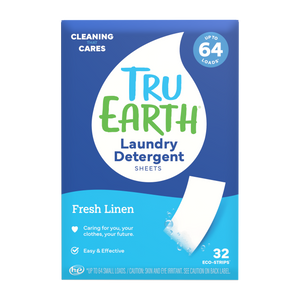A typical washing machine or dryer will have several cycle settings to choose from such as delicate, heavy-duty, permanent press, and more. Each setting is designed to suit different fabrics and clothing items for the best possible wash results.
In this article, we will touch on two cycles; the permanent press cycle and the gentle wash cycle. Both cycles offer different levels of care for your garments so you can keep them looking their best for longer. Knowing which cycle to use can help ensure that your favorite clothes look great wash after wash!

Understanding Your Washing Machine’s Settings
Generally, modern washing machines and dryers have several pre-programmed cycles that are designed for a variety of fabric types and loads. For instance, the delicate cycle is perfect for lingerie, delicates, and knitwear, whereas the permanent press setting works great on linens.
Knowing how each cycle works and what clothes they are suited for is great, but reading care labels on your garments can give you a straight answer as to which settings are best suited for each item. This way, you can get the best cleaning results with minimal wear and tear to your clothes.
Below, we will look at the permanent press setting on your washing machine and the normal wash cycle.
What Is the Permanent Press Cycle?
The permanent press washing machine cycle is ideal for those looking to reduce the amount of time spent ironing. It uses a combination of warm and cold water throughout the wash and rinse cycles, which helps to stop wrinkles from forming.
This cycle typically lasts around 30 minutes, with slower agitation and a longer spin cycle than regular or heavy-duty washes. This ensures that the clothes remain weightless when wet, preventing them from pressing onto each other and causing wrinkles.
It also helps to preserve fabric color and texture and reduce shrinkage - all of which are important factors when it comes to ensuring proper garment care. The lower temperature of this cycle also helps keep energy costs down while providing an effective clean.

When Should the Permanent Press Cycle Be Used?
The permanent press cycle on your washer is an incredibly useful option. It provides a wash that helps protect clothing from shrinking, fading, and creases, making it perfect for delicate fabrics such as rayon, nylon, spandex, and polyester.
Additionally, heavily soiled items can benefit from the permanent press cycle due to its low-temperature setting which is safer for fabric. The permanent press cycle should be used when clothes cannot be ironed or when the garment tag states ‘permanent press’ or ‘tumble dry.’
Lastly, brightly colored clothes that won’t lose their hue (not including whites) are also best suited for this cycle. All in all, the permanent press cycle is a great choice for lighter fabrics that requires a gentler approach!
What Is the Gentle Cycle on Your Washing Machine?
When choosing what laundry setting to use, it is important to take into consideration the fabric type and garment. The gentle or delicate cycle is best for more fragile items, such as certain sweaters, athletic clothing, undergarments and lingerie, crocheted items, and even some blankets or bedding.
This cycle begins with a quick cold wash followed by a slow spin and tumble cycle. This extended length of time gives the fabric plenty of room to move around without getting overwringed or overly stressed. It can also help prevent shrinking or stretching of the fabric during the wash.
Additionally, this cycle is great for helping keep any fading from happening in fabrics like blues and other bright colors. To ensure that your delicate garments are taken care of properly when washing, it is best to always select the gentle, or delicate cycle setting on your washing machine.
There may be features such as a “rinse only” option that can help conserve energy or a “wrinkle-free” setting that can reduce creasing in certain fabrics. Knowing which setting to use on your washer or dryer can help keep your garments looking their best with minimal damage over time.

When Should the Gentle Wash Setting Be Used?
The delicate cycle on a washing machine is ideal for handling more delicate fabrics and materials that require a more gentle approach. It operates at lower water temperatures than the regular cycle does, which helps prevent shrinkage and fading of color-sensitive items like wool, cashmere, silk and other embellished garments such as lingerie and bathing suits.
This cycle also provides less agitation which can help guard against damage to fragile fabrics. Washing machines with a delicate setting are perfect for items labeled “hand wash only” or any other item that requires special care in order to extend its life.
Delicate cycles are generally recommended for all types of delicate fabrics and materials, as they are designed to clean while gently protecting the material’s integrity.
What Are the Differences Between Permanent Press and the Gentle Wash Cycle?
The delicate cycle differs from the permanent press cycle in terms of the spin mechanics. Instead of using a hybrid agitation process – which alternates between moderate and low speed – the delicate cycle utilizes an exclusively slow-speed spin, thus providing extra protection for more fragile fabrics like lace and wool. This slower speed helps to gently move clothes through the washer, while at the same time reducing fabric friction and wear-and-tear that can occur during more vigorous spins.

Additionally, a delicate cycle utilizes lower temperature water and air than a permanent press, ensuring that lace and wools won't fray or tear during washing or drying.
Ultimately, when it comes to washing and drying items such as lace or wool, it is always best to refer to clothing labels for guidance on what cycle and settings should be used; however, if no indication is given it is always recommended to err on the side of caution by choosing the delicate cycle for these types of more sensitive materials.

